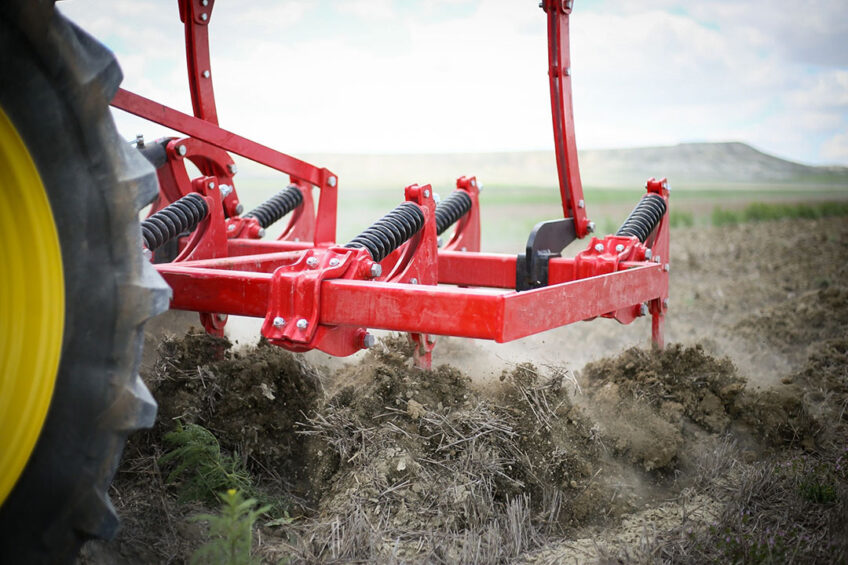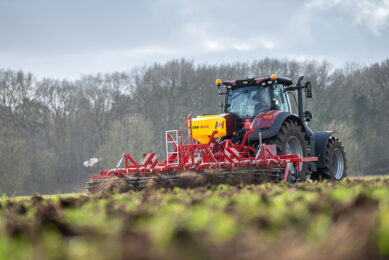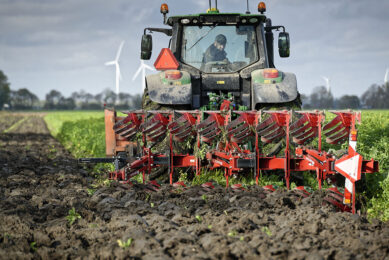Digital tech helps farmers make money with carbon credits

In order to understand how digital technology will help farmers earn money from sequestering carbon in the soil, we take a look at 2 new projects in North America.
Right now, the process of verification for carbon credits – that soil carbon sequestration has occurred and/or that farmers have reduced greenhouse gas (GHG) emissions on farm – is complex.

Key role for digital platforms in carbon markets
At this point, the carbon market as a whole has recognised that the entire process of carbon measurement and verification must be streamlined. This is where digital platforms can play a key role, and indeed, some farm management operation platforms already capture most of the data required for carbon credit achievement.
Pilot project by Truterra and Nori
One new pilot project has been launched by Truterra, the sustainability business of Land O’Lakes, a large American farmer-owned cooperative, and a carbon market firm called Nori.
In this initiative, a digital system that Land O’Lakes farmers already use to capture farm data will be employed to calculate the carbon removal impact of on-farm conservation practices and translate the results into potential carbon credits.
Said another way, the project connects Truterra’s ‘Insights Engine’ farm data system, which farmers already use to capture and manage stewardship and profitability down to the acre, with Nori’s carbon marketplace. The pilot will continue throughout 2021 and new ag retailer and farmer participants will be added in the coming months.
 Soil carbon market could grow quickly globally
Soil carbon market could grow quickly globally
Carbon markets are already providing income to Australian and some Canadian and US farmers for trapping carbon dioxide in their soil and reducing carbon emissions on the farm. How are these markets expected to grow and when will European farmers begin cashing in? Read more…
No cost for growers
There is no cost for growers to submit data they already hold within Truterra Insights Engine to Nori. It’s believed that the ease of the scheme will help growers quickly see the potential value of carbon credits they could achieve from using practices that sequester carbon in the soil and build its health. They will also be supported with agronomic advice and support for decision making having to do with sequestering practices such as tillage, cover crops and more.
Right now, Nori pays farmers up to US$ 15 per tonne of soil-sequestered carbon. Farmers will retain full ownership of their data in the pilot and Nori is providing each farmer with guidance on how much data is needed.

Full ecosystem of decision analysis and support
Truterra’s Downstream Sustainability Manager Nick Reinke explains that most of the carbon market creation efforts thus far have involved data collection and management systems – and whilst these are certainly important, they are however by no means all that’s required to really get a market going.
“We know we will need more acres under sustainable management practices than we currently have to meet the rapidly-growing demand for carbon removals,” he explains. “Scaling practice adoption takes more than just technology, it takes on-the-ground agronomic advice and a full ecosystem of decision analysis and support to meet farmers where they are and help them make the best decisions for their unique operations.”
To truly unlock the opportunity of this evolving marketplace, we must pull together an array of supporting mechanisms and help farmers engage in the practice changes and various ecosystems markets that are right for them.”
Reinke says the systems out there which gather and track on-farm data may appear similar at first, but he believes only Truterra’s system has the ability to truly scale up carbon capture. “To truly unlock the opportunity of this evolving marketplace, we must pull together an array of supporting mechanisms and help farmers engage in the practice changes and various ecosystems markets that are right for them,” he says.
“We are already working through established and trusted communication channels and the advisors farmers look to when making big decisions on their farms.”
Said another way, the system combines analysis (for example, what would happen if a grower uses reduced tillage) with the support needed to actually do it whilst “concurrently evaluating other opportunities that supply a plethora of ecosystem services beyond carbon removal.”
 How to make money from carbon soil sequestration?
How to make money from carbon soil sequestration?
The day is coming when most farmers in the developed world will earn money from storing carbon dioxide in their soils, but when and how much? It all starts with carbon measurement. Read more…
Easier and maximised carbon credit market access
In another similar project, US-based digital ag firm Farmers Edge has partnered with ag carbon credit company Radicle to give farmers easier and maximised carbon credit market access through providing highly-precise near-real-time information (such as field-level sustainability scoring), GHG emissions management tools, automated reporting and payouts, and more.
The project, called FarmCommand, will roll out in multiple phases, starting with streamlining existing programs in Canada and evolving into the US market.
Farmers Edge will provide the technology for carbon management, including tools to measure sustainability metrics, quantify soil health, track agronomic practices, and identify which carbon credits growers can qualify for.
The project is described as a way “to help growers get rewarded for their land stewardship without making them take on all the extra work that’s typically required.”

Identify protocols that are a good fit for farmers
Wade Barnes, Farmers Edge CEO and co-founder, explains that the partnership with Radicle will identify protocols that are a good fit for farmers. “Once we identify the right protocol, we will utilise our proprietary data collection and processing to aggregate an offset,” he says. “We believe nitrogen efficiency protocols have the best fit, but we are open to anything that creates an offset if we have the data to validate it.”
He observes that whilst the Nori-Truterra partnership has similar goals and will utilise Land O’ Lakes’ existing connections to farms, “we believe that our digital platform, FarmCommand, will have a much higher success rate in getting offsets to a buyer because it’s not only about the offsets, but also that the right data is collected.”
Create more opportunities for farmers
Doug Cornell, product owner (carbon) at Farmers Edge adds that “the path to carbon credits for both teams is hard slogging, filled with data issues, communication challenges and regulatory and verification minefields.” However, he believes solving all the issues will “create more opportunities for farmers in North America and around the globe.”








